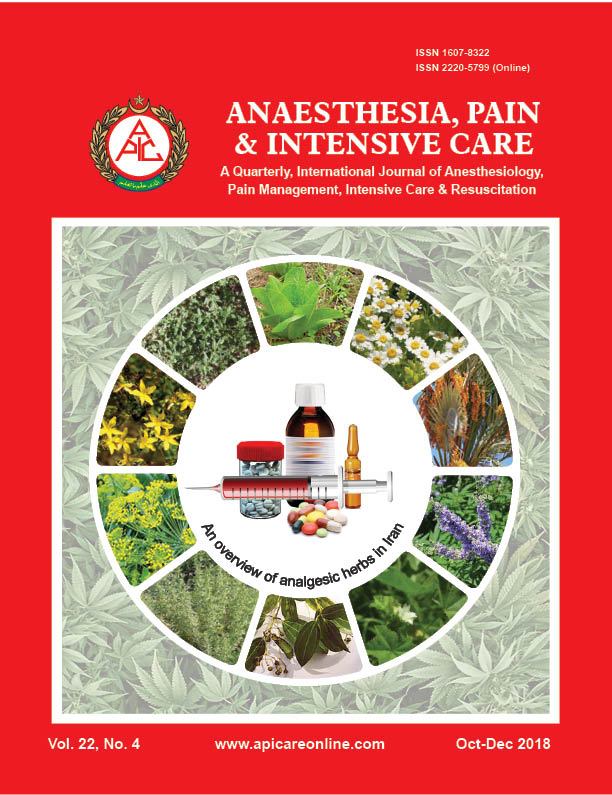Effect of phenylephrine co-administration on prevention of oxytocin induced hemodynamic effects
Abstract
Objective: Oxytocin is frequently used in obstetric patients for enhancing uterine contractions, and to control uterine bleeding; however, its use is associated with hemodynamic changes, especially tachycardia and hypotension. We aimed to determine the effectiveness of co-administration of phenylephrine in obtunding the hemodynamic effects of oxytocin administration in female patients undergoing elective cesarean section under spinal anesthesia.
Methodology: This randomized controlled trial was conducted from Sep 2017 to Oct 2018 in our hospital. We enrolled 60 pregnant females of ages 18 to 40 years, with singleton pregnancy who were planned for elective cesarean section under spinal anesthesia. Baseline heart rate (HR) and systolic blood pressure (SBP) were noted. In Group-P, 50 µg of phenylephrine diluted in 3 ml normal saline was given followed by oxytocin 3 units diluted in 5 ml normal saline over a period of 15 sec. In Group-N; only 3 ml normal saline was given before oxytocin administration. Mean HR and SBP were noted again after 3 min of oxytocin administration. Mean change in HR was also calculated.
Results: Mean age of patients included in this study was 28.10 ± 4.85 y. There was reduction in heart rate in phenylephrine group while there was significant increase in Group-N patients. Mean change in HR was -09.13 ± 5.80 beats/min in Group-P versus 11.32 ± 13.81 beats/min in Group-N (p < 0.001). Mean change in SBP was -0.70 ± 8.69 mmHg in Group-P versus -6.46 ± 16.29 mmHg in Group-N (p = 0.09).
Conclusion: Phenylephrine co-administration is very effective in reducing the risk of hypotension and tachycardia associated with oxytocin administration in female patients undergoing cesarean section in spinal anesthesia.
Citation: Saleem M, Qadri AA, Ali S, Shabbir A. Effect of phenylephrine co-administration on prevention of oxytocin induced hemodynamic effects. Anaesth Pain & Intensive Care 2018;22(4):479-482
Received – 16 Dec 2018; Reviewed – 23 Sec 2018; Corrected & Accepted – 31 Dec 2018














